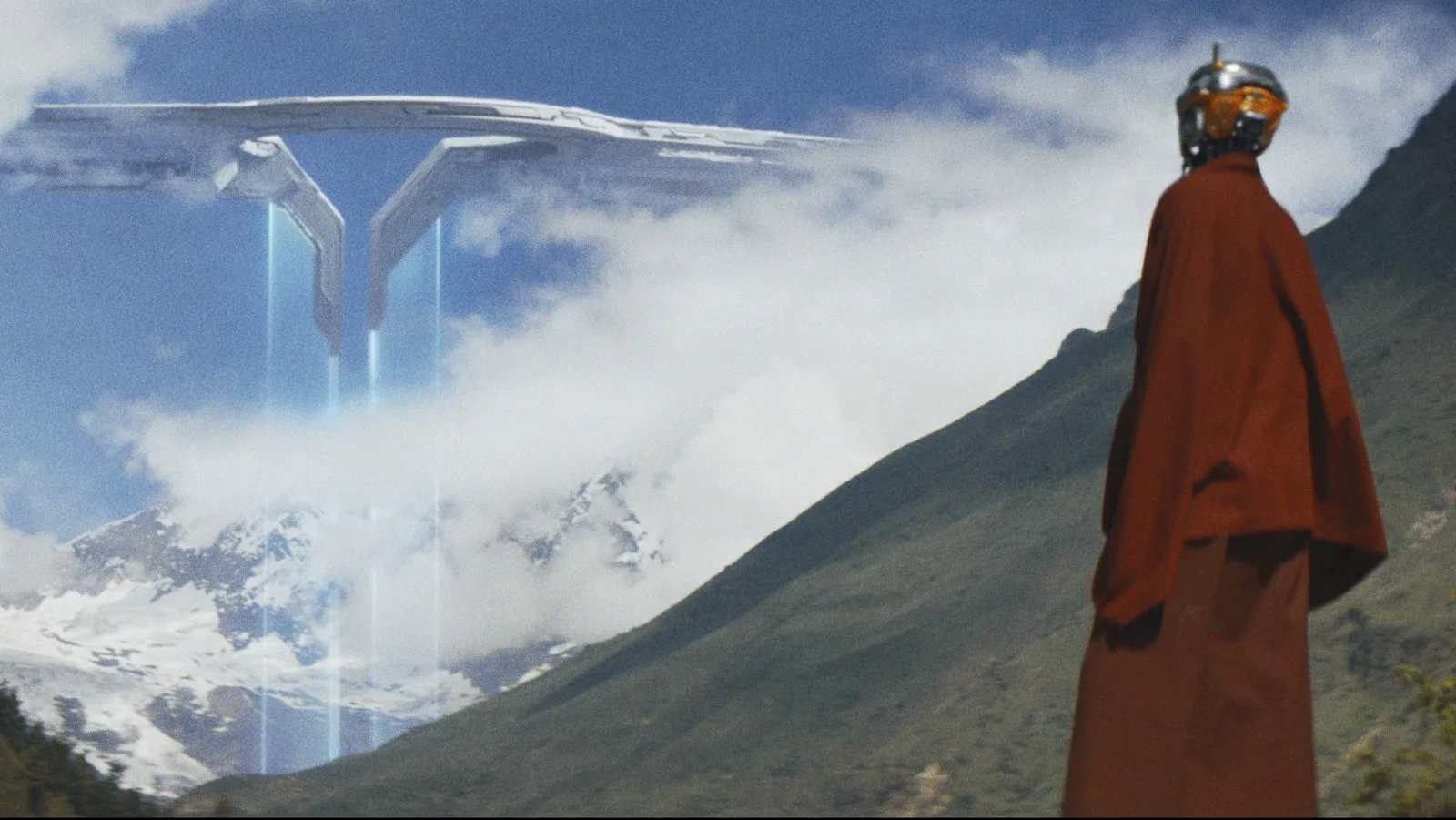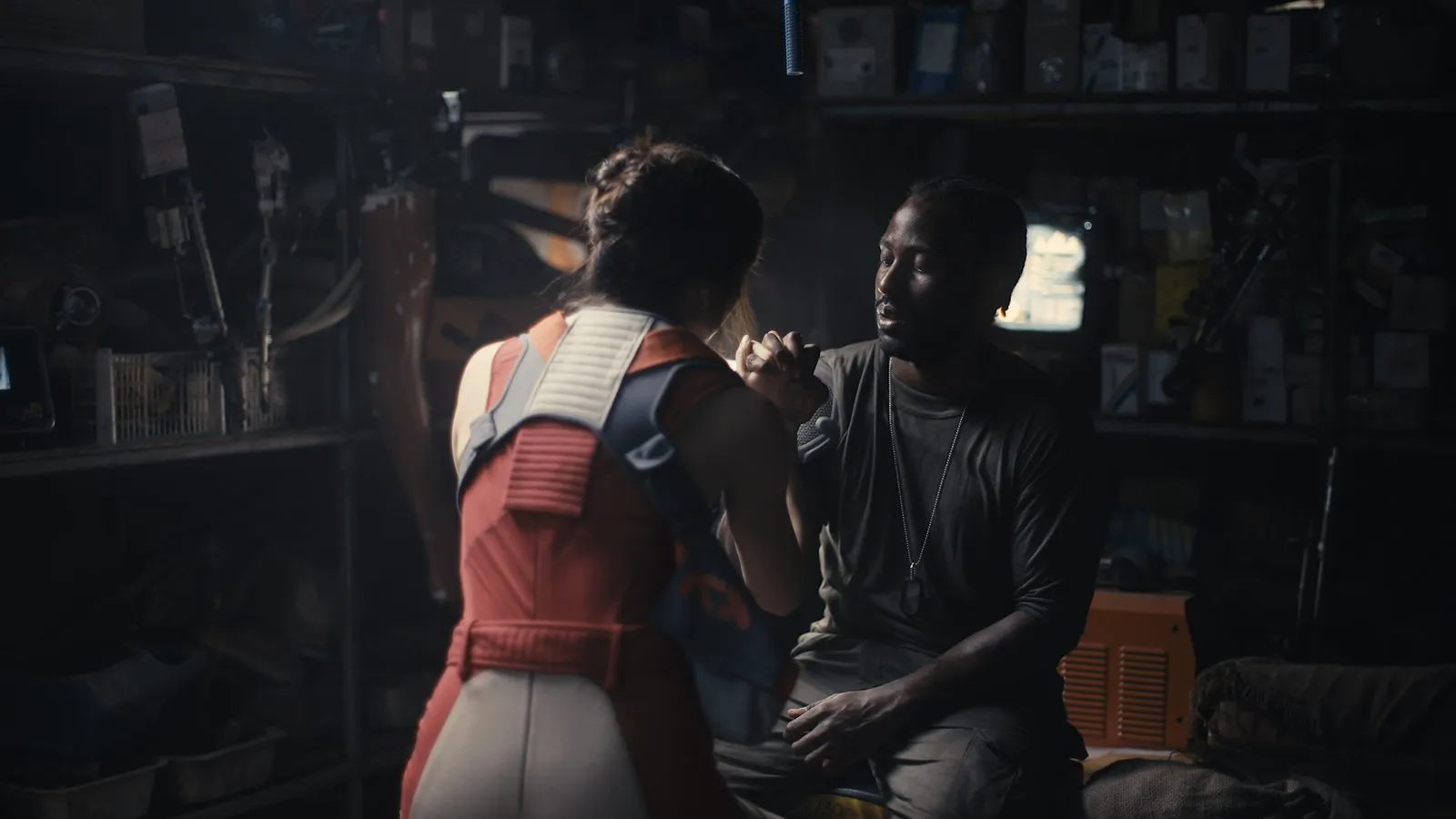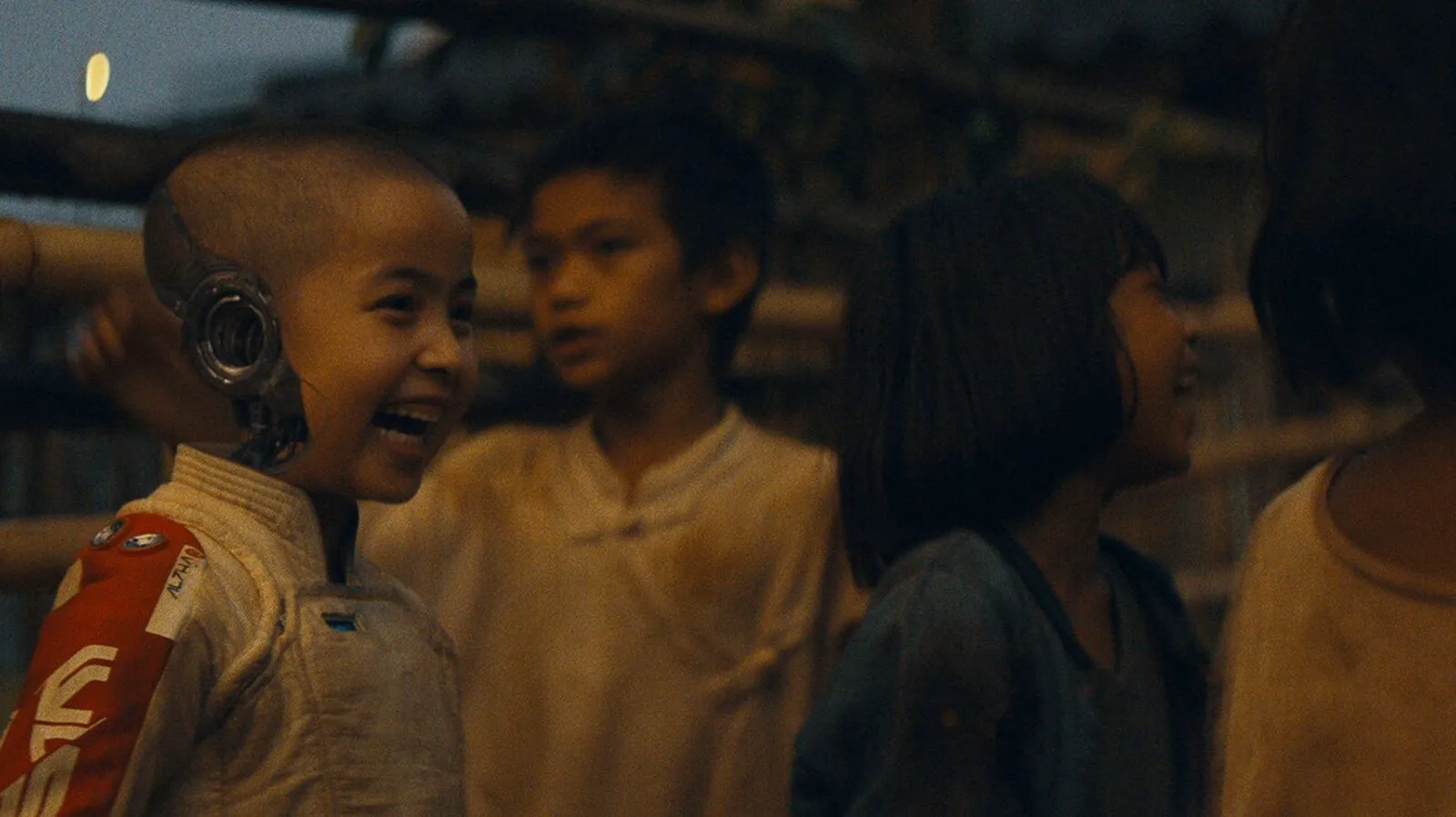Year 2065. A decade has passed since a nuclear explosion in Los Angeles compelled Western nations to wage war against intelligent machines. American Sergeant Joshua (John David Washington) is working undercover in New Asia, where simulants and robots are treated as equals. His mission is to track down the enigmatic Creator of artificial intelligence. During his mission, Joshua grows close to a local woman named Maya (Gemma Chan). The couple marries and prepares to start a family. However, their dreams of domestic bliss are shattered by a night raid by American special forces, during which a pregnant Maya is presumed dead. Five years later, Joshua agrees to return to service to help his compatriots find and destroy the Creator’s new secret weapon. The task becomes more complicated when he realizes that the weapon is a little android girl (Madeleine Yuna Voyles).

John David Washington as Joshua in a still from “The Creator”
During its production phase, “The Creator” looked quite promising. The idea of centering the plot around the conflict between humans and artificial intelligence, while not groundbreaking, was more relevant than ever. The project’s originality was also a plus—a rare quality in modern filmmaking, especially when it comes to blockbusters. The brainchild of British director Gareth Edwards stood out: not an adaptation, not a remake, not part of a franchise, not a spin-off, and not a prequel. The film was positioned as a unique auteur statement.

Still from “The Creator”
In theory, “The Creator” could have been an extraordinary work, much like one of its central characters—a one-of-a-kind android girl. What emerged, however, was an impressive but generic product—a faceless copy of a robot from the crowd. The project’s individuality was lost in an avalanche of references: from “Avatar” to “Blade Runner,” from “Terminator” to “Star Wars,” from “Children of Men” to “District 9,” from “Artificial Intelligence” to “Apocalypse Now.” Ultimately, only the outlines of the original idea remained. The blockbuster is overloaded with borrowings and brings nothing new to the genre.

John David Washington as Joshua in a still from “The Creator”
Director Gareth Edwards (“Godzilla,” “Rogue One: A Star Wars Story”) and co-writer Chris Weitz fantasize about the future in the context of technology’s impact on human life. However, the film doesn’t always succeed in exploring the depths of this theme, structurally falling apart and riddled with plot holes. The question of what it means to be human is an overused cliché. The grandiose dialogues sound unconvincing, and the connection between the protagonist and the android child feels contrived. Hans Zimmer’s score seems to compensate for the lack of meaningful lyrics, but even it doesn’t always manage to create the right atmosphere.

Still from “The Creator”
In the end, the approach to the subject matter seems too superficial and sentimental. The authors try to manipulate the audience’s emotions, frequently resorting to cheap drama. It’s a hit-or-miss affair, to be sure. However, by the finale, tears are successfully extracted: it’s hard to remain indifferent during the characters’ touching farewell, unless you’re a robot programmed to lack empathy. In the film’s universe, if such machines exist, the creators aren’t particularly interested in them. All the authors’ attention is focused on the society of simulant androids who, in one way or another, can experience feelings. Machines are more human than humans—one of the film’s main messages. The project defends AI as if the script were written by ChatGPT.
Often, a derivative script is a death sentence, but not in the case of “The Creator.” While Edwards may not excel at creating emotionally rich text, he is undoubtedly skilled in the visual department. Compositionally, the film looks better than many modern blockbusters. And this is despite the fact that only $80 million was spent on the film’s production—a pittance by today’s standards, as similar Hollywood projects cost twice or even three times as much. To save on the budget, the authors had to abandon the use of green screens and large-scale sets. Instead, the film crew, led by Edwards and “Dune” cinematographer Greig Fraser, traveled the world and filmed on location. Computer graphics were superimposed on the footage. The result is an expressive picture with impressive panoramas and intriguing visual effects. Although “The Creator” doesn’t offer anything interesting from a content perspective, the high-quality visuals smooth out, if not all, then many of the shortcomings.